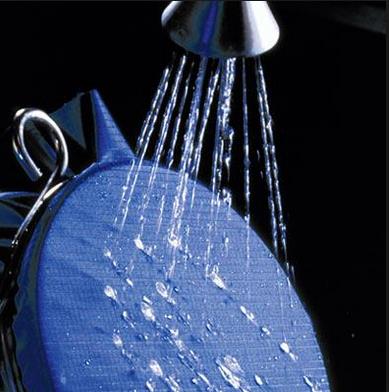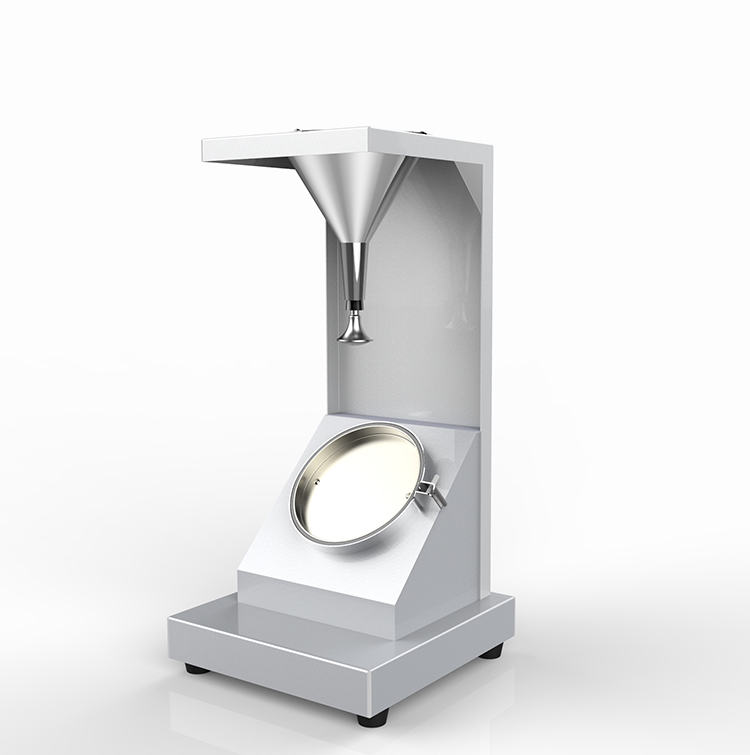
NewsInformation Center
The Spray Rating Test Theory
2018/01/16
Water repellent is a state characterized by the non-spreading of water globules on a textile material. This term is not normally applied to a water-repellent finish impervious to air. This is generally referred to as water proof. It is generally done by treated fabric with fat, wax, rubber etc. This addition may be in form of physical film or coating or physical combination.



The feature of a waterproof fabric is the low degree of air permeability. Spray tester is such an instrument which measures the water repellency of a fabric. In this test a small amount of shower is produced by pouring water through a spray nozzle. The water falls on to the specimen which is mounted over a 6 in. diameter embroidery hoop and fixed at an angle of 45 degrees. To carry out the test, 250 cm3 of water at 70oF are poured steadily into the funnel. The American Association of Textile Chemists and Colorists recommend the use of a chart of photographs against which the actual fabric appearance is compared.

Spray Rating Tester is not intended to predict waterproofness, since it does not measure the penetration of water through fabric.The instrument comprises a stainless steel framework, incorporating a funnel. The spray nozzle is mounted on the neck of the funnel. The precision spray nozzle contains 19 holes - one central hole surrounded by two concentric rings of 6 and 12 holes respectively.
Spray Rating Tester determines the water repellent of specimen, pour 250ml of distilled water into the funnel of tester and allow it to spray from a nozzle down a distance 150mm to the specimen which already mounted on a 45 degree test hoop.Compare with spray test rating chart, evaluating the grade by water remained on the specimen surface when test ends.
The spray rating is determined by comparing the appearance of the tested specimen with descriptive standards and photographs. The AATCC Spray Test Rating Chart is available for this purpose.The Spray Test is a simple method to determine the resistance of any fabric, which may or may not have been given a water-resistant or water-repellent finish, to surface wetting by water. It is not intended to predict waterproofness, since it does not measure the penetration of water through fabric.
Working Procedure:
The sample fabric is mounted on the embroidery hoop and fixed on the instrument at 45o.
Now the beaker is filled with 250 cc water and poured on the funnel.
The water is showered through spray nozzle on the fabric.
After spraying has finished the sample holder is removed and the surplus water removed by tapping the frame 6 times against a solid object, with the face of the sample facing the solid object.
The water repellency is assessed from the spray rating chart.
5 tests should be made and the nearest rating assigned to each, since no interpolation is allowed, i.e. a rating for a specimen cannot be 75.
The mean of the 5 ratings is taken as the result.
Result:
Water repellency of a 100% cotton fabric is 0.
Water repellency of a polyester fabric is 0.
Water repellency of a umbrella fabric is 70.
Water repellency of a parachute fabric is 100.
Remark:
According to the type of fabric water repellency varies from 0-100. From the experiment we can understand this. It is mainly selected depending on the end use of fabrics.
Previous: A Variety Of Purposes Of Tensile Testing
N e x t : UV Aging Test Chamber Structure



